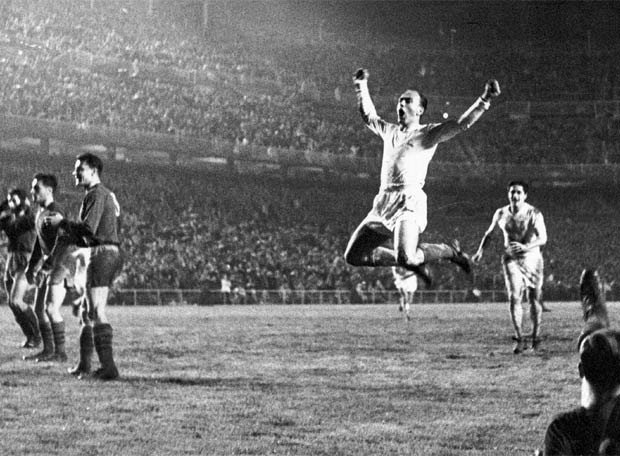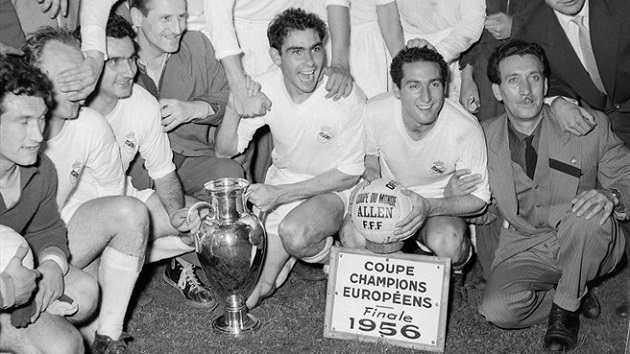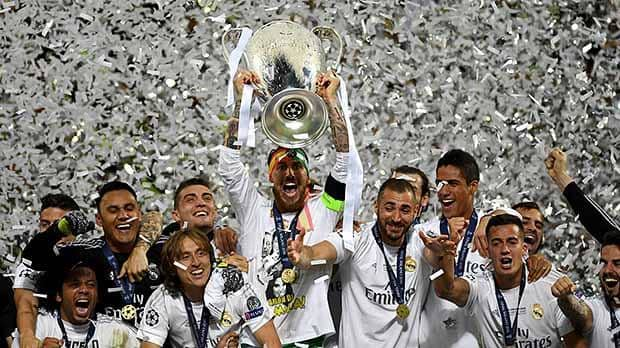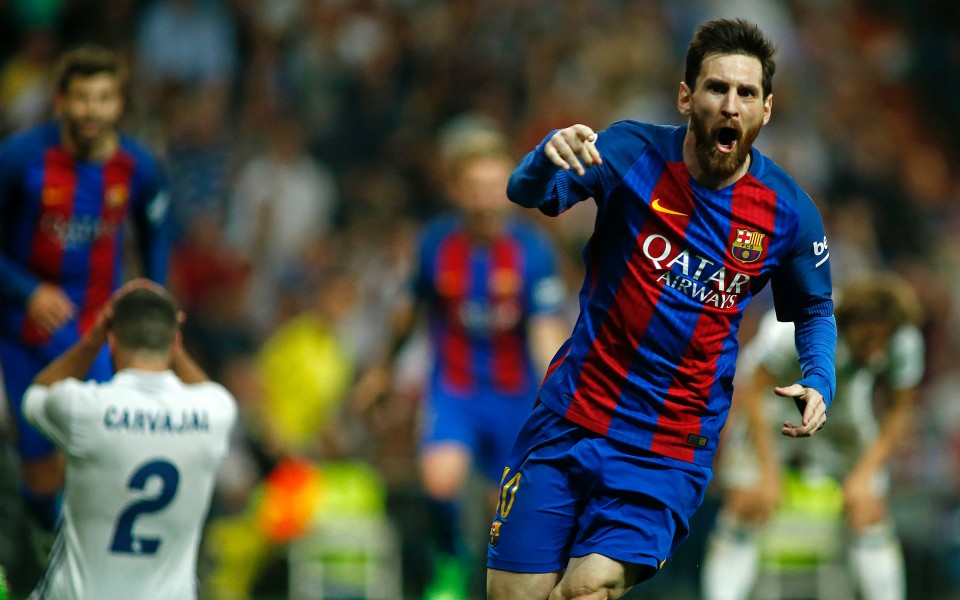Through over 100 years of history, Real Madrid has become one of the most recognizable names in world football. But how did they get there? In partnership with Howler magazine, The Center Circle is embarking on a multi-part journey from the roots of this historic club to the Cristiano Ronaldo era it enjoys today. If you consider yourself a Real fan, or really just a soccer fan in general, this is for you. Finally, do you see that “Hala Madrid” graphic right above this? You can click on that to open up Howler’s incredible Real Madrid timeline, replete with informative tidbits, pictures, and some cool graphics. Scroll through each section, zoom in to read, and enjoy.
Previously: Part I – Part II – Part III – Part IV
Part V: The Blond Arrow’s Era
If you had a chance to sign possible the greatest player ever, what would you do? More importantly, what wouldn’t you do? You definitely wouldn’t murder someone. You probably wouldn’t kidnap anyone. Aside from felonious assaults, though, you’d make deals, wouldn’t you? You’d call in favors, wouldn’t you? In the 1950’s, Don Santiago made a deal with the devil to steal Aflredo Di Stefano from rivals FC Barcelona. Nobody can tell you the current state of Bernabeu’s soul, but the signing catapulted Madrid to perhaps the greatest, most successful era of soccer for a single club.
Things were going poorly at the decade’s start. Rivals FC Barcelona had signed Hungarian all-star Laszlo Kubala out from under Bernabeu’s nose. Kubala had played at a friendly in the new Chamartin, been impressed, but Don Santiago had refused to his Laszlo’s father-in-law as manager. Barca scout Josep Samitier seized the moment to sign him. In his first two seasons at Barcelona, Kubala lead them to the league-cup double. Don Santiago signed promising Spanish winger “Paco” Gento from Racing Santander, but he couldn’t escape the feeling he’d let the big fish get away.
Then, the Saeta Rubia (“Blond Arrow), aka Alfredo Di Stefano, arrived in Spain. At the time, Di Stefano played for Colombian club Millonarios, even though his playings technically belonged to Argentine club River Plate. After a friendly between Millionarios and Madrid, Don Bernabeu was left salivating. There was one problem: again, scout Josep Samitier had pipped him to the player. FC Barcelona signed a deal with River Plate and that was that. Or was it? The strategic thinking Bernabeu bought his “future” playing rights from Millonarios.
Then, things got heated. Barcelona lodged a complaint with FIFA and, not surprisingly, FIFA found that the Colombian contract was inferior to the Argentine one. However, that was not the end of it: the Franco regime passed a law banning foreign players. Quickly, Barcelona realized they had to deal with Bernabeu. The two camps met before a mediator in Madrid, but word leaked to the Catalan press of an “alternating year” arrangement. This infuriated Barca fans, so the board reacted by firing the President, giving up and letting Madrid have their fun, and regrouping.
Di Stefano’s impact at Madrid was instantaneous: he won the pichichi award as top goalscorer, Madrid won La Liga, and the team even beat Barcelona in the General’s Cup semifinals. A few years later, Madrid gambled on signing an aging Ferenc Puskas, one of the stars from the famed Hungarian national team. It paid immediate dividends: they went from being the best team in Spain to being perhaps one of the greatest club teams ever. They won the first five European Cups, including a phenomenal 7-3 shellacking of Eintracht Frankfurt in Glasgow, a game that inspired a young Alex Ferguson to play soccer.
Madrid’s spectacular run came to an end at the hands of their bitter rivals FC Barcelona. With Spanish starlet Luis Suarez (Miramontes, not the racist) pulling the strings and Kubala thundering shots, Barca beat Madrid in the opening round with a late goal in the second leg by Evarista de Maceda. Madrid had beat FC Barcelona in the semifinals the year before, prompting the firing of Helenio Herrera. However, this year was not meant to be.
At decades end, Madrid has won five European Cups and four La Ligas. As far as deals with the devil go, Bernabeu didn’t come out so bad.
Next:
Part VI: Coming Back Down to Earth








No Comments